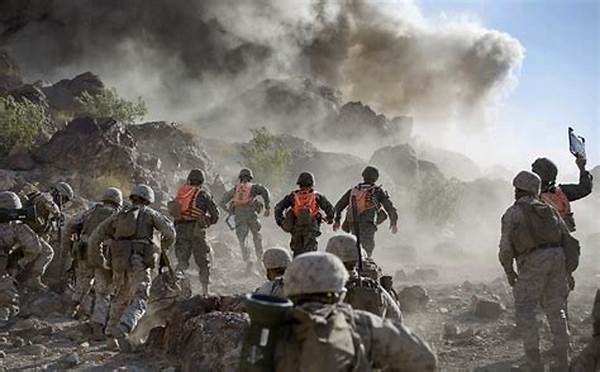The intersection of defense preparedness and environmental preservation presents a complex challenge. Military training, a fundamental aspect of national defense, often occurs in environments rich in biodiversity. However, the physical and resource-intensive nature of such training can inadvertently lead to habitat degradation. Understanding the balance between these needs is crucial for sustainable military practices and ecological conservation.
The Environmental Impact of Military Training
Military training necessitates the use of large expanses of land, often in ecologically sensitive regions. The activities involved, such as vehicle maneuvers, live ammunition exercises, and construction of training facilities, have been shown to contribute to habitat degradation. The destruction of flora, soil compaction, and disturbance of wildlife are notable impacts. Careful management of these areas is essential to mitigate negative consequences. Strategic planning and implementation of environmentally friendly practices can reduce the adverse effects traditionally associated with military activities. In some cases, rehabilitation efforts and collaborations with environmental organizations have proven effective in restoring damaged habitats. This highlights the potential for coexistence of military preparedness with environmental stewardship.
Military Training Sites and Ecosystem Disturbance
1. Military training often requires extensive land use, leading to significant habitat degradation.
2. Habitat degradation occurs when training operations disrupt natural landscapes and ecosystems.
3. Environmental policies can alleviate the impact of military training on habitats.
4. Sustainable practices in military training can mitigate habitat degradation over time.
5. Effective monitoring ensures military training does not irreparably damage habitats.
Policy and Regulation in Military Training
Regulatory frameworks play a crucial role in mediating the effects of military training on the environment. Policies that integrate environmental considerations into defense planning are essential in minimizing habitat degradation. Legal frameworks often require military activities to comply with environmental standards, balancing national security needs with ecological preservation. Effective regulations bolster conservation efforts and promote sustainable practices. Continuous assessment of training impacts facilitates the adaptation and evolution of these policies. Stakeholder involvement, including military, environmental agencies, and local communities, further enhances the effectiveness of regulatory measures. Their collaboration ensures diverse perspectives are considered, fostering innovative solutions that address the challenges posed by military training and habitat degradation.
Strategic Approaches to Mitigating Environmental Impacts
1. Comprehensive environmental assessments can identify potential impacts of military training.
2. Incorporating habitat preservation in military planning reduces future degradation.
3. Collaboration with environmental experts enhances sustainable training practices.
4. Technology advancements offer alternative training methods that reduce habitat pressure.
5. Restoration projects can remediate areas affected by military training activities.
6. Environmental monitoring ensures adherence to sustainability goals in training areas.
7. Investing in renewable energy for bases minimizes the carbon footprint of operations.
8. Community engagement helps align training activities with local conservation efforts.
9. Education programs within the military promote environmental consciousness among personnel.
10. Adaptive management strategies allow for responsive adjustments to training impacts.
Balancing Defense and Environmental Stewardship
The necessity of military training does not preclude the duty of environmental stewardship. Efforts to achieve a symbiotic relationship between these seemingly divergent priorities necessitate the incorporation of ecological principles into defense strategies. By adopting practices such as reduced land use intensity and prioritizing non-invasive training alternatives when possible, the military can lower its ecological footprint. Investment in technology plays a pivotal role. Simulated training environments and virtual exercises offer promising alternatives, significantly reducing the physical disruption to natural habitats. Furthermore, engaging local communities enhances awareness and fosters collaboration toward common goals.
The Future of Military Training and Environmental Conservation
Emerging technologies hold promise for reducing the environmental costs of military readiness. The integration of virtual reality and advanced simulation techniques in training programs has begun to shift the focus away from resource-intensive methods. These innovations not only preserve habitats but also offer versatile training opportunities. In parallel, ongoing research and dialogue among military and environmental experts aim to refine practices and mitigate existing damage. Landscape restoration initiatives can reverse some impacts of past activities, paving the way for a more sustainable future. Addressing habitat degradation remains a critical aspect of environmental conservation, and the military’s participation in these efforts is essential. The path forward requires cooperative efforts, continuous evaluation, and a commitment to both national security and ecological preservation.
Conclusion: Toward a Sustainable Coexistence
In conclusion, the conundrum of military training and habitat degradation requires multifaceted solutions involving policy, innovation, and collaboration. The imperative to maintain defense capabilities is undeniable, yet equally pressing is the need to safeguard environmental integrity. The adoption of environmentally considerate training procedures and technological advancements paves the way for a sustainable coexistence. Cross-sector partnerships amplify these efforts, fostering a shared responsibility in preserving our natural world. Through engagement, awareness, and strategic action, it is possible to reconcile the demands of military preparedness with the principles of ecological conservation. Continued commitment to these ideals will ensure that the pursuit of security does not come at the expense of our planet’s ecological heritage.





